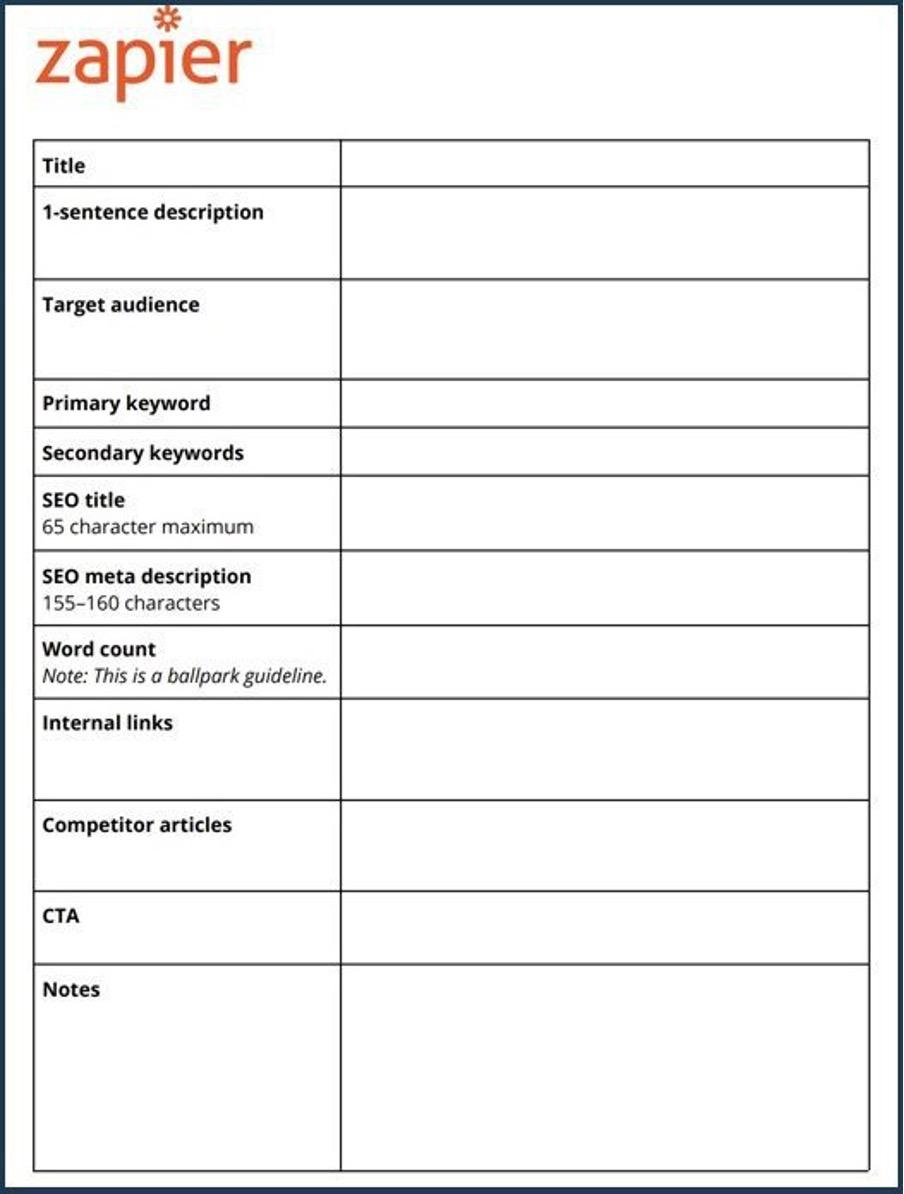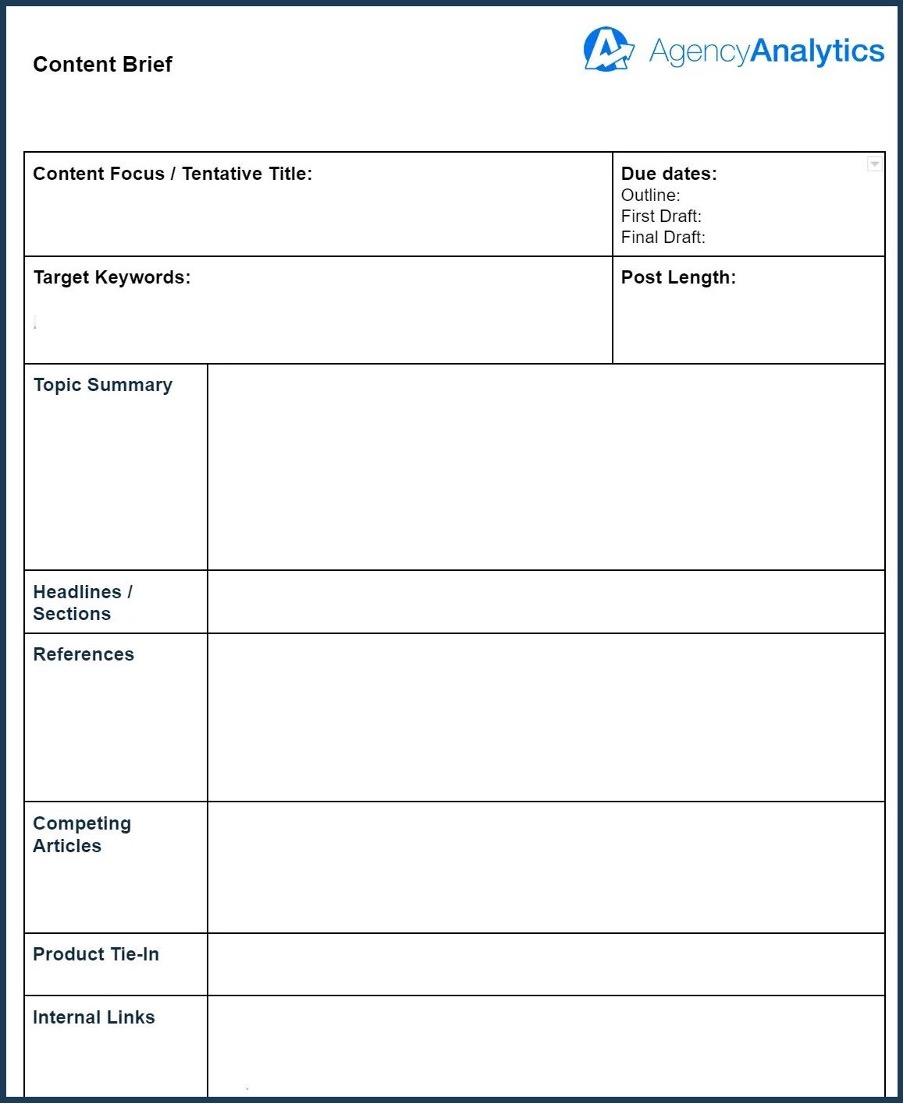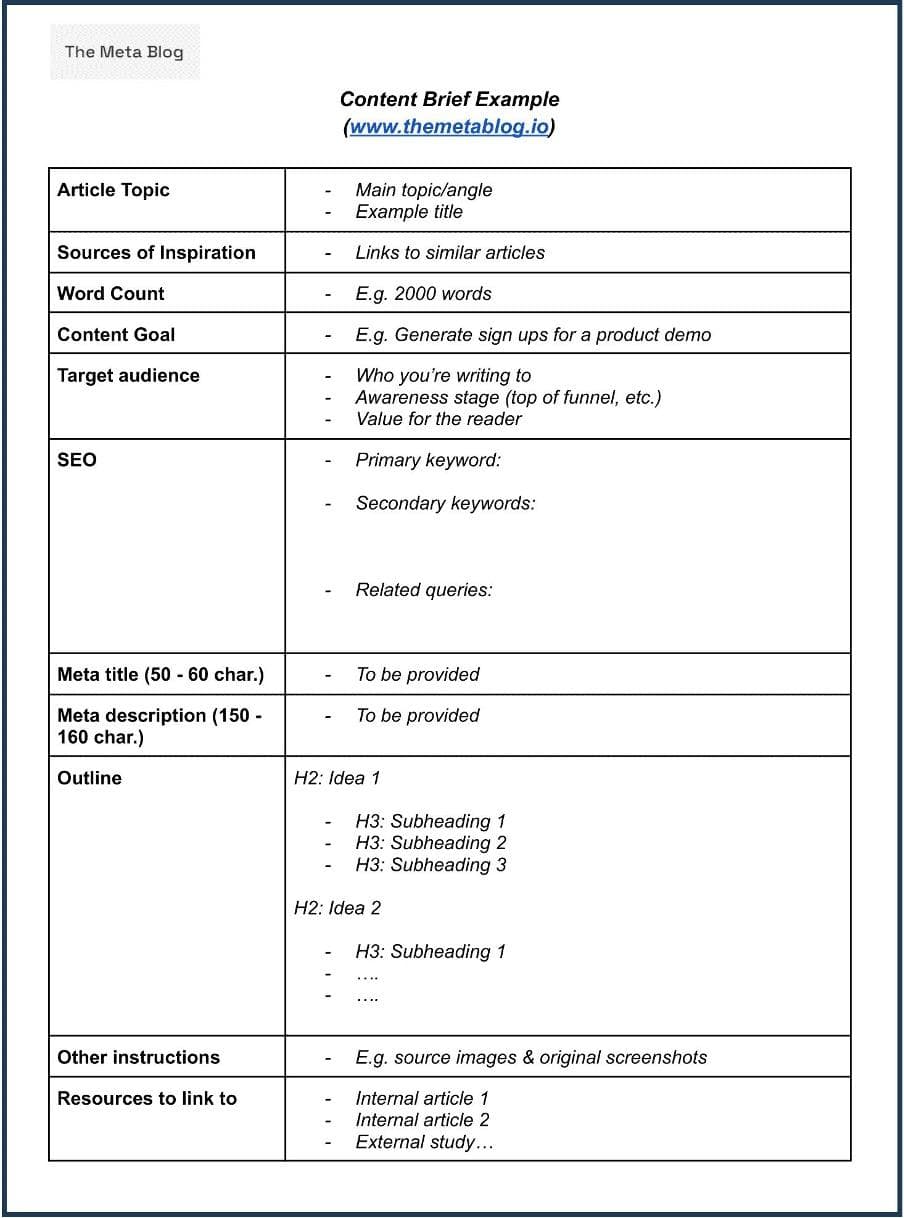How to Create a Content Brief Using AI (with Prompts and Examples)
This is more than a guide for content briefs. Here, you can use our AI-powered content brief assistant, while learning tips and best practices. Then, when you’re ready to take your content strategy to the next level, sign up for a free trial of the Media Shower platform.
How to Use Our Content Brief Generator
Just answer a few questions, and our AI-powered assistant will create great content briefs, instantly and free. Remember: the more information you give it, the better the results you’ll get out of it.
AI Prompts to Refine AI Content Brief Templates
Once you’ve drafted your content brief above, use these prompts to polish and perfect it:
- Optimize Keywords:
“Refine this content to include the keywords <insert keywords>
“Ensure the terms <insert keywords> are naturally incorporated into the brief.” - Improve Tone and Style:
“Rewrite this section with a more casual and conversational tone.”
“Can you provide a more authoritative and professional version of this?” - Align Strategy:
“Ensure this content aligns with our Q3 content strategy focusing on customer testimonials.”
“Revise this to fit our ‘beginner-friendly’ approach for the upcoming campaign.” - Clarify Target Audience:
“Adjust this brief to target <audience> in <interest area>.”
“How would this look if we’re specifically targeting corporate executives in the tech industry - Expand on Specific Points:
“Can you elaborate more on the benefits of our new product feature?”
“Expand on the challenges and solutions section, providing more detailed examples.” - Check for Consistency:
“Ensure the content maintains a consistent voice and perspective throughout.”
“Verify that the messaging remains aligned with our brand guidelines.” - Highlight Call-to-Action (CTA):
“Emphasize the importance of signing up for our newsletter in this section.”
“Rewrite the conclusion to encourage attending our upcoming webinar strongly.” - Incorporate Data and Stats:
“Can you weave in relevant statistics about <topic or data set>?”
“Integrate findings from our recent customer survey into the main points.” - Address Potential Objections:
“Include counterarguments for common concerns about our subscription pricing.”
“List and address three possible criticisms of our new platform update.” - Ensure Brevity and Clarity:
“Simplify and condense the main points to fit within a one-page brief.”
“Eliminate redundant information and ensure the main ideas are communicated clearly.”
Content Marketing Brief Templates
Good content briefs should provide a roadmap for your team on what is expected. Here are a few template examples.
Example 1: Zapier
Zapier, a company that provides integrations for web applications for use in automated workflows, has a reasonably straightforward content brief. What we like about this brief is that it offers clarity around SEO. They’ve also included ‘competitor articles’, which is a great way of seeking clarity around what competitors are doing and what is considered ‘good’.

Example 2: AgencyAnalytics
AgencyAnalytics is a company that claims to help marketing agencies scale with automated client reporting. Their content brief is also reasonably straightforward, but what we like about it is the inclusion of ‘Product Tie-in’ and ‘Internal links.’ This allows the content creators to generate content with a sales focus and an SEO focus. Remember, while sales is a critical component of content that your team creates, you want to ensure that any online content ranks well on search engines. Always include SEO elements in your briefs.

Example 3: Meta Blog
Meta Blog is one of the many online businesses that offer tips, resources, and best practices to grow a blog. One key element that stands out to us in their content brief is the inclusion of ‘Content Goal.’ This is important as each piece you create should have a goal in mind. What are you looking to achieve with the content? They also include a ‘Source of inspiration’ to help guide the content creator in developing content aligned with their expectations.

As you can see, they’ve also broken down the outline of the content they are looking for. This is a great way to guide your content creators if you want synergy in your content’s structure.
Example 4: Media Shower
We have our own in-house brief format that resembles some of these industry-leading examples. We focus on the structure of the content–the type, title, keywords, CTA, and so on. We also provide spaces to include content outlines, internal and external links, and top-ranking competitors.

Best Practices for Building Content Briefs
You can follow several best practices when setting out your content briefs.
- Have a Clear Objective: You must have a section defining the primary goal of the content you want to create. It has to align with the overarching objectives of the business.
- Understanding Your Target Audience: Content creators need to understand the target audience clearly, so ensure you include this in your brief. If you have multiple audiences, be sure to clarify this. Find out more about defining a target audience here.
- Focus on Tone and Voice: Make sure you specify the tone and voice you are looking for. Is the tone professional or conversational, for example? For voice, are you looking for first-person or third-person? These are important elements to clarify.
- Focus on SEO: We already mentioned the importance of this above. Include what SEO elements you would like to focus on in the content. Include relevant keywords and any SEO strategies that will optimize the online discoverability of your content.
- Consider Your Content Format: First of all, make sure that you clarify what sort of content you are looking for (blog, landing page, infographic, etc). Then, set out what sort of structure you would like the content to have. Look at the above examples, as they set this out quite nicely.
- State Your Call-to-Action: Remember what the goal of your content is. This is usually captured in the call-to-action, or CTA. State the desired action that you want the reader to take. If you need more insights into CTAs, take a look here.
- Back it up With Data: Include any research you would like incorporated into the piece to add credibility to any comments. You can also task the content creator to source statistics or references to bolster any claims you want to make.
- Consider Iterations and Revisions: To ensure the content is created to your expectations, you need a system for reviewing drafts and giving feedback. Make this clear in the brief. It”s unlikely that the first draft you receive will be ready to go.
The Media Shower marketing platform has dozens of AI assistants, built just for marketers. Click here for a free trial.
More Tools for Busy Marketing Managers:


